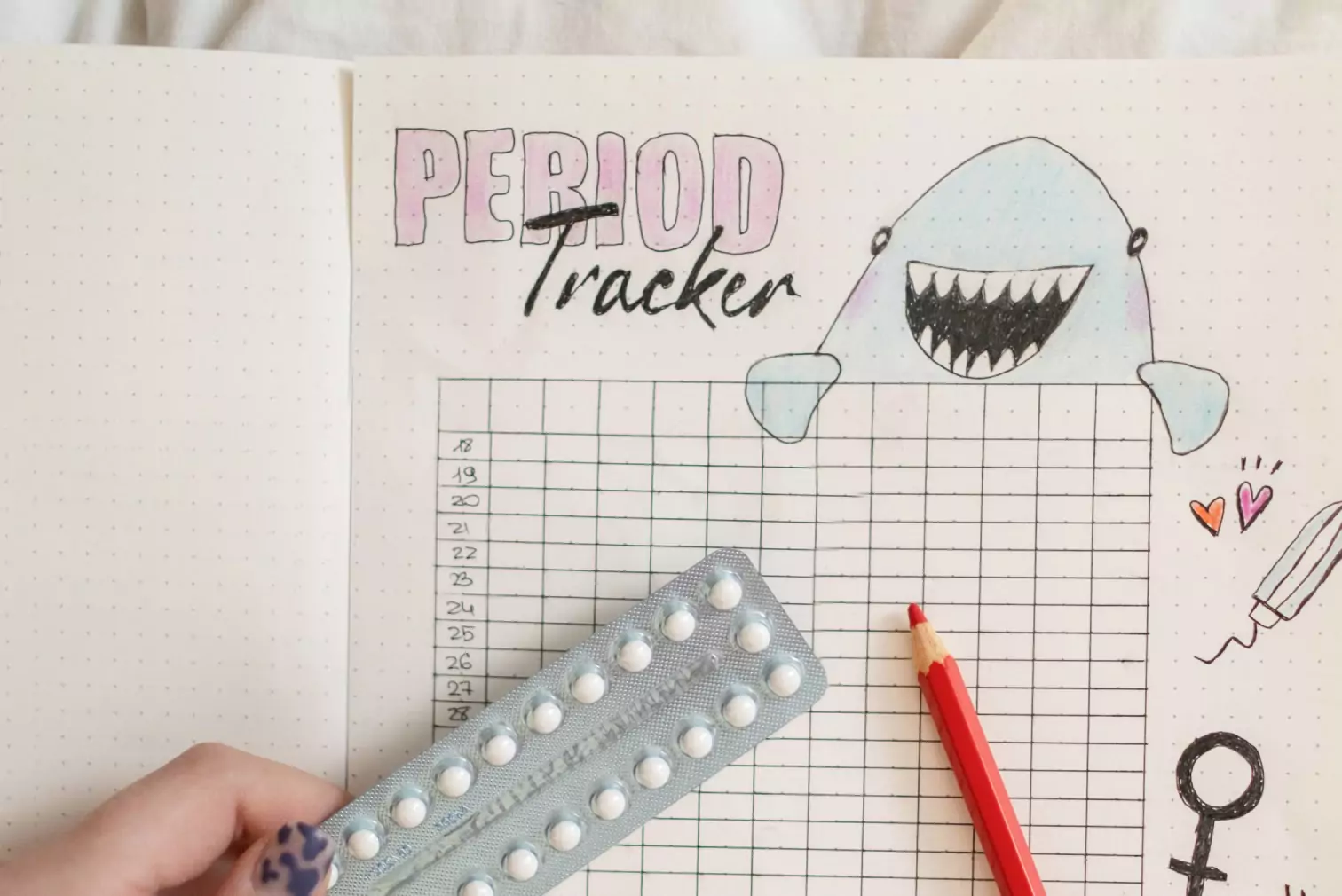How Does Your Menstrual Cycle Affect Your Blood Sugar Levels?

Key Takeways
Menses, menstrual cycle, menstrual period — whatever you want to call it, we're sure you agree that it's a time of the month that's never much fun. They can be downright lousy, regardless of how old or how healthy you are. And the time typically between ovulation and a menstrual period can be even worse.
As many as 90 percent of individuals experience depression, irritability, cramps, brain fog, and cravings in the run-up to their period. This is the infamous PMS or premenstrual syndrome. People with hormonal disorders like polycystic ovarian syndrome (PCOS) can experience even more symptoms.
Why does any of this happen? During that time of the month, your body produces many hormones, which explains why you probably don't feel like yourself and stress out just before your period starts. The average menstrual cycle lasts around 28 days, measured from the day your period begins to the day before your next one starts.
However, everyone's body is different, which is essential to remember when discussing the menstrual cycle. On average, you begin experiencing a menstrual cycle when you're between 11 and 14 years old. So, what's the deal with menstrual cycles, and are all these hormonal changes risk factors for higher blood sugar and diabetes? Getting your period and dealing with menstrual bleeding is already more than enough to deal with.
If you've been diagnosed with diabetes or other issues concerning your blood sugar, you may need to track your cycle and its effect on your blood sugar. There are multiple phases in your menstrual cycle, and in each one of them, your body and hormones will be a little different.
Read on to learn more about the hormonal fluctuations, phases in your menstrual cycle, and whether they have any bearing on diabetes and high blood sugar.
The Different Phases of Your Menstrual Cycle

- Follicular or Proliferative Phase: This is the first phase of the cycle from day 1 to day 14. During this phase, your estrogen level rises, and an egg prepares to be released from your ovary.
- Ovulation: This occurs 14 days before your period starts. During this time, your body releases an egg from your ovaries.
- Luteal or Secretory Phase: This phase occurs after ovulation from day 15 to day 28 of the cycle. During this phase, your uterine lining begins to produce hormones that'll help support a pregnancy.
- Menstruation: This is your actual period. It occurs after the luteal phase when a pregnancy hasn't occurred. During this phase, your levels of estrogen and progesterone are low, which prompts the body to shed your uterine lining.
Does Your Menstrual Cycle Affect Your Blood Sugar Levels?

You may notice more glucose fluctuations the week before your period. This is, in part, due to hormonal changes.
The week before your period starts, the hormone, progesterone, is high. Progesterone may increase insulin resistance, making it harder for your body to use glucose. This may result in hyperglycemia and blood sugar spikes when you least expect them.
It's also important to note that changes in estrogen and progesterone throughout the cycle is believed to cause food cravings. Food cravings can lead to indulging in higher carb or sugar-sweetened foods, which are more likely to lead to blood sugar fluctuations.
On the other hand, estrogen can encourage insulin sensitivity or increase insulin resistance, depending on your dietary state. Since estrogen deficiency or impaired estrogen signaling could be linked with insulin resistance, this may be a risk factor for obesity and type 2 diabetes.
When you enter your ovulation phase, your estrogen levels rise, and your insulin resistance lowers as your estrogen levels spike. You may not notice as significant an impact on your blood sugar during your ovulation phase as you do during your luteal phase. Estrogen, which is higher during the follicular phase of the cycle, helps the body use glucose. Because of that, glucose may be lower during that phase.
Overall, hormonal changes during your menstrual cycle can affect your blood sugar levels. Wearing a CGM can help you see these changes in real-time and help you make diet changes to support your glucose and cravings throughout your cycle.
Do Your Blood Sugar Levels Affect Your Menstrual Cycle?

Having poor blood sugar control may disrupt a woman’s menstrual cycle. More specifically, studies show that insulin resistance may impact female hormones and menstruation.
People with type 1 diabetes may have irregular menstrual cycles, especially if their glucose levels are unstable or uncontrolled. They may also often encounter delayed onset of menstruation, earlier onset of menopause, reduced number of pregnancies, and increased risks of stillbirth.
Women with type 2 diabetes also tend to experience irregular menstrual cycles, including longer, heavy periods. Additionally, they're more likely to develop uterine fibroids and PCOS than women who maintain a healthy weight and don't have diabetes.
However, the use of metformin or other types of diabetes medicines along with various types of oral contraceptives has demonstrated an improvement in menstrual regularity and severe symptoms related to PCOS and premenstrual syndrome (PMS).
So yes, your blood sugar can in fact impact your menstrual cycle, though there are many ways to improve your blood sugar regulation with diet and lifestyle changes. Additionally, prescription medications like metformin and birth control have been shown to improve menstrual cycle consistency and symptoms like PMS.
Does Birth Control Affect Your Blood Glucose Levels?

Now that we understand more about the link between hormonal fluctuations and the menstrual cycle, let’s examine what externally produced hormones can do to your body during your cycle.
There are many different types of birth control to consider:
- The birth control pill may impact your blood sugar levels. You have to remember to take the pill every day at the same time. Birth control pills may also increase the risk of stroke and blood clots, making it essential to work with your healthcare provider to find the right pill for you.
- Some opt for an injection called Depo=Provera. This method lasts for three months at a time, so you don’t have to remember to take a daily pill. This form uses progestin, and the side effects may include weight gain, hair growth, and headaches.
- Vaginal rings are another form of birth control. Flexible latex rings contain estrogen and progesterone and are usually easy to insert and remove. They can be a good option for people with latex sensitivities and are often more convenient than birth control pills. Some of the side effects are similar to those of the birth control injection.
- IUDs or intrauterine devices can be hormonal and non-hormonal. Non-hormonal devices are copper IUDs, also known as copper Ts because of their T-shape. The copper IUD offers a solution that doesn't directly affect your hormones. Those with diabetes may see an increased risk of developing infections with this contraceptive device.
When it comes to birth control, it's a good idea to have an in-depth conversation with your gynecologist. Healthcare providers should still weigh the benefits and risks before prescribing birth control and determine which method is best for your body and your needs. This is especially important if you have diabetes or any other pre-existing medical conditions.
Once you begin taking any medication that contains hormones, make sure to track the effects that it is having on your body and your blood sugar. A continuous glucose monitor (CGM) can be the perfect tool to help you manage your blood glucose levels within healthy ranges.
Engage with Your Blood Glucose Levels with Nutrisense
Navigating the complex relationship between your menstrual cycle and blood sugar levels can be a key component in maintaining your overall health and well-being. Instead of dealing with irregular cycles, painful physical symptoms, and unpredictable blood sugar fluctuations, engage with your body by tracking your menstrual cycle alongside your blood glucose levels.
When you join the Nutrisense CGM program, you can track your blood sugar over time using a CGM. Our team of dietitians and nutritionists is also available to provide additional support and guidance, including helping you understand the impact your menstrual cycle may have on your blood glucose levels.
Are you ready to take the first step? Let's start with our quiz to discover how Nutrisense can empower your health journey.
Find the right Nutrisense programto turn insight into progress.
Go Beyond Glucose Data with Nutrisense
Your glucose can significantly impact how your body feels and functions. That’s why stable levels are an important factor in supporting overall wellbeing. But viewing glucose isn't enough. Nutrisense, you’ll be able to learn how to use your body's data to make informed lifestyle choices that support healthy living.
One-to-one coaching
Sign up to access insurance-covered video calls to work with a glucose expert: a personal registered dietitian or certified nutritionist who will help tailor your lifestyle and diet to your goals.
Monitor and measure what matters
With the Nutrisense CGM Program, you can monitor your glucose with health tech like glucose biosensors and continuous glucose monitor (CGM)s, and analyze the trends over time with the Nutrisense App. This will help you make the most informed choices about the foods you consume and their impact on your health.
Find your best fit
Ready to take the first step? Start with our quiz to find the right Nutrisense program to help you take control.

Amanda is a Nutrition Manager and Registered Dietitian, with a Masters in Dietetics from Stephen F. Austin State University. Originally from south GA, she got her undergrad degree from Texas Tech University. She worked at a hospital in Fort Worth, TX, for 4 years as a dietitian, counseling those living with HIV.




